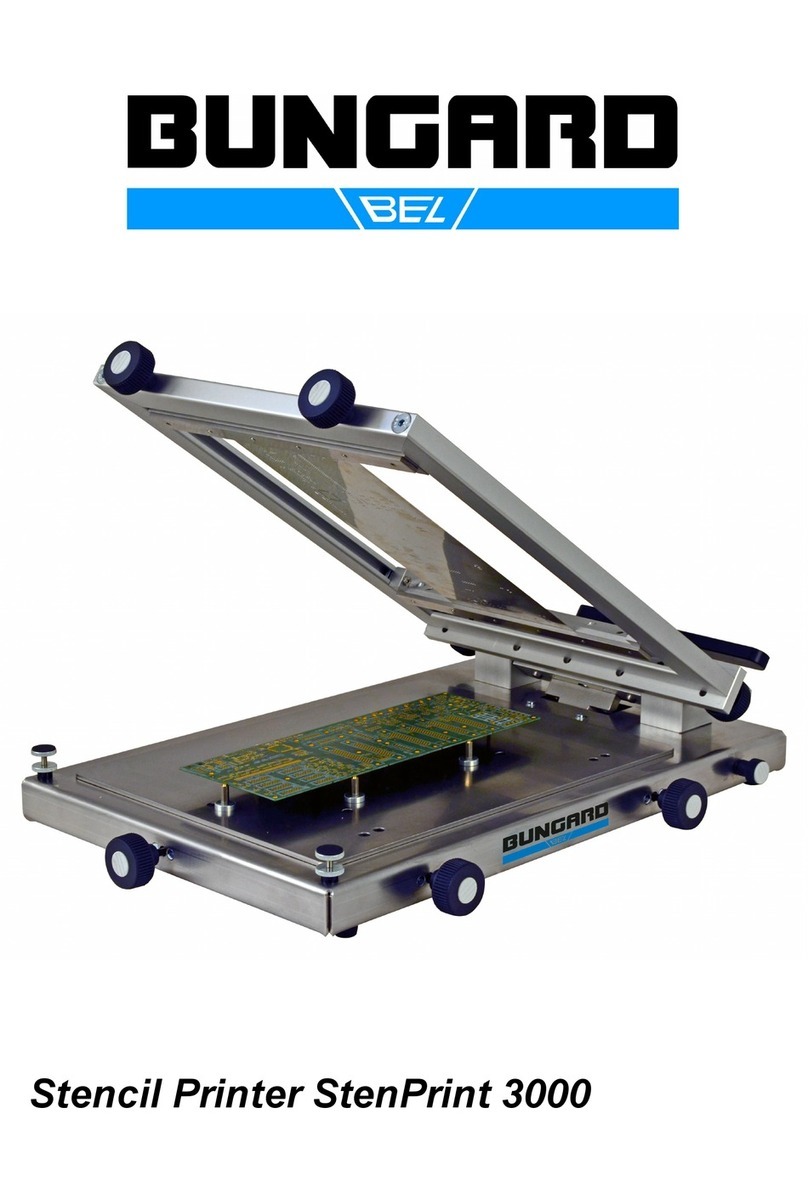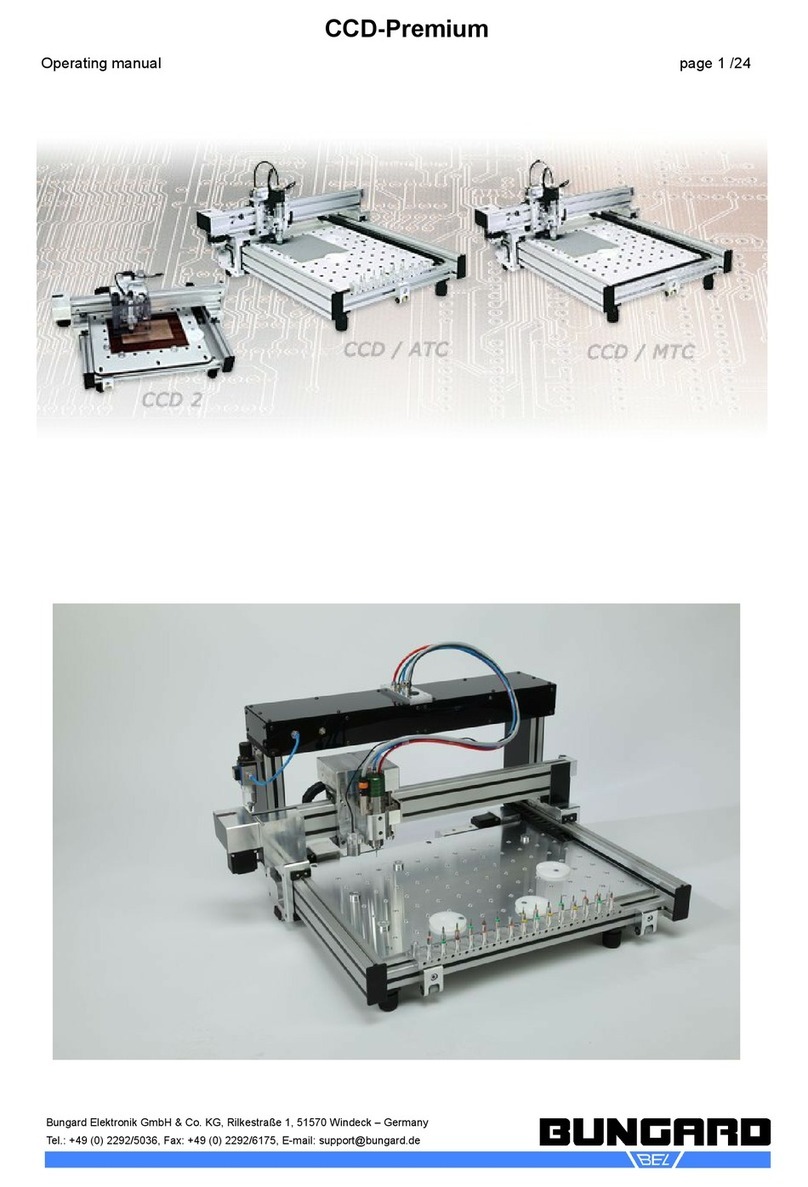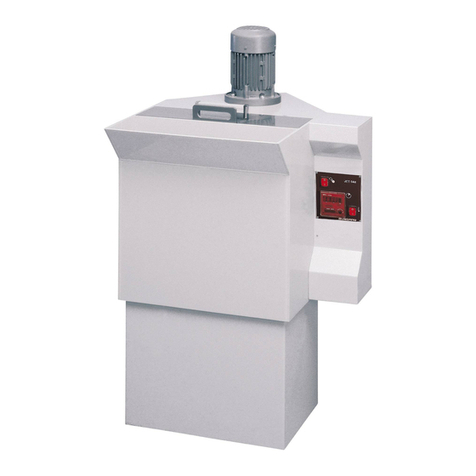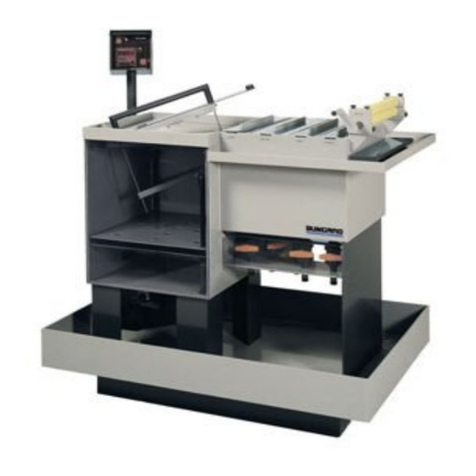DL500-Manuel-E Page 6 / 20
After co pletion of the work, the ain switch should always be turned off.
Before all aintenance work on the achine (filling, e ptying, cleaning, etc.) turn off achine and pull the
plug.
The che icals used in the achines often have a high electrical conductivity. Any contact of the liquid
with live parts therefore constitutes a serious threat to electrical safety. In such a case, the achine ust
be i ediately disconnected fro the ains and the defect ust be eli inated i ediately and profes-
sionally. This applies correspondingly with leaked or spilled etchant.
Water connection
After work or prolonged interruption close the cock valve of the building water supply to prevent water
da age fro a possible leak in the hose.
Personal protection equipment
When handling corrosive che icals ake sure to wear protective clothing, gloves and face protection.
Observe the safety instructions of the anufacturer or the supplier.
Temperature
Switch on achine only when tanks are filled! The quartz glow bar ust be always sufficiently covered
with etching agent! Uncovere glow bar may cause estruction of machine! Fill the etching cha ber
up to 1 c under the cover of the ediu container.
The electronic ther ostat is protected against breakage and short circuit of the cable to the ther al
sensor. This does not relieve the operator fro the obligation, to onitor the te perature of the li-
quid. Exother ic che ical reactions ay under certain circu stances, which we cannot influence,
cause overheating of the etchant. The axi u operating te perature of the achine is 45 °C.
If the etchant is prepared by dissolving salts or ixing liquids, do that in any event outside of the
achine! Observe the safety instructions of the che ical supplier.
If you want to use liquids which ay react exother ic, take additional easures to prevent over-
heating. If, despite all precautions, overheating of the etchant occurs, the heater ust be switched
off first. The pu p however ust re ain switched on, so that the etchant is cooled by the circula-
tion.
Before draining the tanks, let the heater cool down for approx. 10 in, so the heaters will not get
da aged.
Working safety
The achine has a lid safety switch which stops the pu p circuit when opening the cover. Please
check the function regularly of the position switch.
There is a ball valve at the bypass of the tubing leading upward. Opening this ball valve while the
etching pu p is on will lead to exit of etchant. This is an unavoidable danger in case of any i prop-
er or unattended operations at the back of the achine. The you ay encounter by the closing the
ball valve, pull off the handle and store the handle separately.
Exhaust air
We reco end to install an exhaust above the achine for eventual etching stea s. This reco -
endation is however purely precautionary. Leakage of aggressive stea s could not be proven in
two independent investigations (water vapour escapes, the salts of the etching agent re ain in the
solution).
The achine possesses at the back of the rinsing co part ent a pipe socket, which can be con-
nected to the exhaust air syste of the building. The ventilating outlet is consciously not arranged at
the etching zone, in order to prevent that except stea s also liquid etching agent can arrive into the
exhaust air syste .
Environmental protection
Dispose used etchant according to your local regulations. Pay heed to the aterial safety data sheet
(MSDS) of your che icals.
Rinsing water
The legislation generally prohibits to exceed certain axi u concentrations and quantities of cop-
per (and other heavy etals) in the waste water (usually 0.5 g copper / liter of water). After etching




































